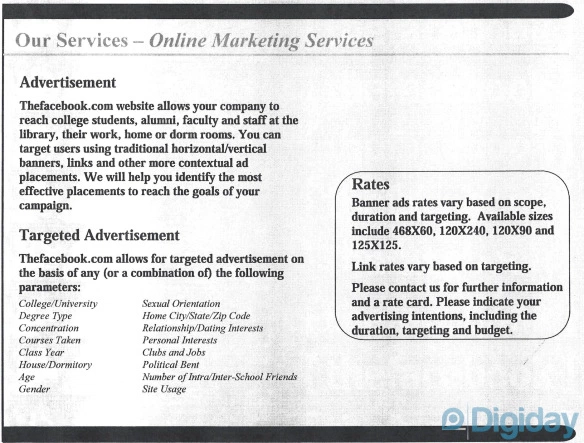Salesforce: Next Wave Of Digital Advertising
OREANDA-NEWS. October 16, 2015. There have been three major innovations in the history of digital advertising:
- The modern banner ad and display ads, started by Hotwired then DoubleClick
- Search advertising, based on keywords, led by Google and Yahoo
- Identity-based advertising, led by Facebook
Additionally, the digital revolution has shifted from a personal computer revolution, with “a computer in every home and on every desk” (Bill Gates, 1980), all connected to the internet, to a mobile first world, where the vast majority of all computing devices are smartphones.
Birth of Digital Advertising, display ads and banner advertising
According to a September 2015 report by Carat, global advertising spend grew \\$529 billion in 2015, of which \\$129 billion, or 24%, was digital advertising. Despite that massive number, the modern digital ad is only just over 20 years old, when Hotwire introduced the first modern-style banner ad, for AT&T’s “You Will” campaign.
The next year, in 1985, Forrester Research sized the online ad market as worth \\$37 million. From \\$37 million to \\$129,000 million in just twenty years; that’s a 50% compound annual growth rate (CAGR) sustained over a 20 year period!
These original ads were purchased on a site-by-site, ad-placement-by-ad-placement basis, and the concept of programmatic advertising was still three years away. Those first ad units, like this one, commonly viewed as the first banner ad, showed high double digit click through rates as consumers engaged with this new type of advertising.

Soon after, DoubleClick introduced the first programmatic ad buying, the first ad network, and the first CPM bidding mechanism – in which advertisers pay for every thousand impressions their ads get (cost per mille, or thousand). In 2014, programmatic ad buying became the dominant way display ads are bought for the first time, according to the IAB, with 52% of all display advertising spend.

Search ads based on purchase intent
The next major innovation was the birth of Search Advertising with Keywords, starting with GoTo.com in 1998 (renamed Overture in 2001) and followed by Google AdWords in 2000 — when AdWords started, it had just 350 customers, buying ads on a CPM basis. However, the platform soon evolved, and in 2002, Google began using Overture’s pay-per-click (CPC) model for advertising pricing.
Search ads also evolved to include ad targeting based on keyword searches in 1999, which let advertisers target ads based on the things they were searching for and interested in purchasing.
Google created the first ad relevance ranking as part of its pricing model in 2002, based on ad click through rates (CTR), which increased the quality of the search experience and advertising revenue at the same time.

Identity-based advertising and the customer journey
The third pillar of digital advertising — based on who individual people are and their real world identities instead of anonymous cookies — was born with the initial Facebook ads in 2005, led by marquee advertisers including Apple and Victoria’s Secret, as well as innovative companies looking to test the next big thing, such as Party Poker. At that time, Facebook’s advertising sales focused on the self-identified traits of users and banner ads; “TheFacebook’s” Newsfeed wouldn’t start for several more years. Digiday found a great set of slides showing the early ad targeting:

Facebook’s detailed ad targeting options fully began in 2009, with the birth of its self-service ad platform and introduction of language and geographic based targeting. The very next year, in 2010, Brighter Option was founded as a premier self-service Facebook advertising platform. Brighter Option now forms the core of Salesforce Social.com.
In 2012, Custom Audiences was introduced as the most personal form of ad targeting available today. This feature lets advertisers reach their exact audiences by automatically comparing hashed versions of their customer email addresses and/or phone numbers with those of users on Facebook.
At Salesforce, we are glad to be a part of this evolution of digital advertising, and encourage you to think about how you can use your own customer data to target ads with Salesforce Active Audiences and Social.com. To learn more about how the Facebook advertising model works, check out our guide.




Комментарии